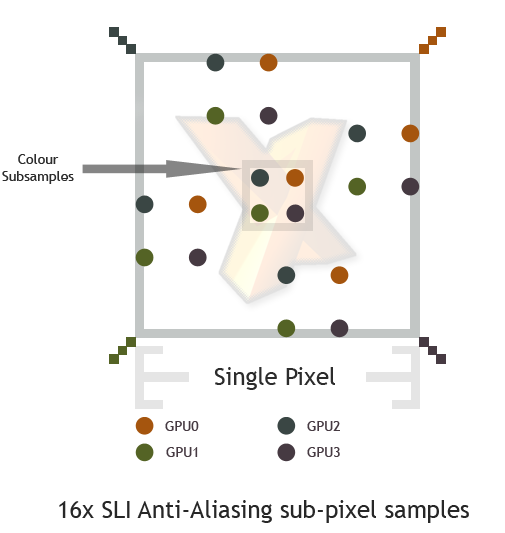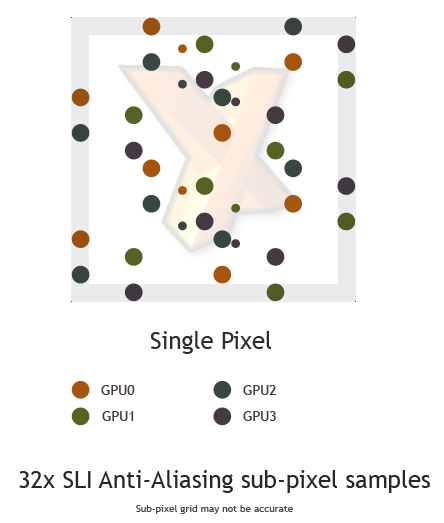New Anti-Aliasing Modes
The new AA modes are pretty easy to explain. NVIDIA's current generation of GPUs have fixed sub-pixel sampling resolution and no ability to move the grid. Maximum multi-sampling EER is 4x4 with a rotated grid, which is fine for a single GPU system, but for increasing IQ on a multi-GPU system the limitation holds things back a bit.With Quad SLI, four GPUs can combine to do 16x or 32x AA. 16x has each GPU doing 4x multi-sample AA, with offset subsamples per GPU, final sample data combined on the primary GPU (with data sent over the inter-GPU SLI links no less).
That theoretically gives you the performance of 4xAA with the increased IQ afforded by 16 samples.
32x SLI AA is each GPU doing basic 8xS anti-aliasing (4xMSAA + 2xSSAA), combining on the primary GPU with data sent over the SLI links.
The problem is that the EER and grid is fixed, so simple offset of the sub-pixel samples won't give you the image quality of a solution that provides a higher EER and different sub-sample positions.
The samples taken are too near each other, in essence, minimising the effect they can have on geometry and colour anti-aliasing. Therefore, while unproven by us in actual testing, theory tells us that 32xAA on Quad SLI might offer little IQ improvement over 16xAA on dual-GPU SLI. 8xS is used both times, and just because there are more sub-samples taken, doesn't mean IQ improves dramatically.
It's the 16x performance mode (no super-sampling) that intrigues your author the most. Will the SLI links offer enough performance to see 16x perform well on Quad SLI?
You can find approximate grids below. Beware, the grids might not match what the hardware does. You can get a feel for the cramped sample distribution, though, since they won't be far off.
Quad SLI AA 16x

Quad SLI AA 32x










